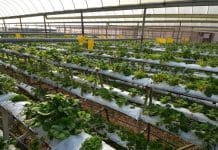By: Dr. Hj. Muhammad Khusairy Bin Capt. Hj. Bakri is a Postdoctoral Research Associate at the Composite Materials and Engineering Center, Washington State University (WSU), a Faculty-Staff member for the Center of Bioplastics and Biocomposites (CB2) for North Dakota State University, United States of America, and a Lead Research and Development Sector of the Association of Professional Technicians and Technologists (APTT) Sarawak,
and Ahmad Faisal Bin Mahdi is a Senior Lecturer at the Faculty of Business and Management, Universiti Teknologi MARA (UiTM), a Chartered Institute of Marketing member.
The landscape of higher education is ever-evolving, requiring a continuous reevaluation of its role in society. Malaysian politician Anwar Ibrahim recently emphasised the need to give higher learning institutions space to innovate and create new educational ideas. However, it is crucial to recognise that true reform goes beyond physical space; it demands a transformation in the approach to education from top to bottom of the system. This article explores the reformation of the education system by integrating industrial-scale research, hiring highly talented talent, and highlighting its potential to foster economic growth, social development, and product innovation.
Before delving into the reformation proposal, it is essential to assess the current state of higher education. Most universities in Malaysia still focus on their traditional models. This conventional model often focuses on theoretical knowledge, detached from real-world applications, involving small-scale work that does not always apply in the real world. Furthermore, some of these theories and technology have become obsolete and do not even fit the nation’s environment. Moreover, bureaucratic hiring and its hurdles and outdated curriculum hinder the adaptability of educational institutions to the rapidly changing needs of society and the economy. As Anwar rightly suggests, the call for space should extend beyond physical structures and encompass an intellectual and institutional overhaul suited to the industrial move.
Integrating industrial-scale research into higher education is a strategic move to bridge the gap between academia and industry. By fostering collaboration between universities and businesses, students gain exposure to real-world challenges, and academia becomes a driving force for economic growth. Research projects aligned with industry needs provide students with practical skills and knowledge, making them more employable upon graduation. Thus, the industry must also play a part in ensuring the students attached to them are given scale experiences and not just intern exposure. Therefore, the universities should invest in real-life industrial-scale facilities to achieve that by collaborating with driven business players. Malaysian universities must remember that they provide graduates and facilities to conduct research toward developing products for industries, not the other way around. Also, universities should become hubs that offer consultation to sectors to progress towards the future.
Education is not only about imparting knowledge; it is also about shaping responsible and informed citizens. Incorporating industrial-scale research into higher education allows students to engage with societal challenges, fostering a sense of social responsibility. Through collaborative projects addressing environmental sustainability, healthcare access, and social inequality, students become active contributors to positive social change. However, in most Malaysian universities, poor and outdated facilities have become something that needs to be looked out for, as almost 80% of the universities in Malaysia have fewer funds for maintenance or purchasing facilities to par with worldwide development. This is a common scenario in local universities, resulting in an obsolete knowledge transfer and undesirable future employees.
Innovation is a cornerstone of progress, and higher education institutions can be pivotal in driving it. By integrating industrial-scale research, universities become hubs of creativity and problem-solving. Students and researchers working on cutting-edge projects contribute to developing new products, technologies, and solutions that benefit society. This approach not only enhances the reputation of educational institutions but also strengthens the nation’s competitive edge on the global stage. They are securing the fact that chasing ranking is not the responsibility and main focus of any university in Malaysia.
One of the primary challenges in implementing this reformation is the need to shift traditional mindsets within academia from top to bottom of the management, especially those who controlled and manipulated the system for too long. Encouraging lecturers and professors from old to new, embracing a more applied and industry-oriented approach may face resistance from top to bottom of the management due to certain political factors affecting rejection and resilience from inside the universities themselves. In addition, universities’ human resources should play a significant pivotal role in identifying top talented candidates based on their capacity and capability to do research, networking, and visibilities, not just through “recommendations” to ensure transparency in the education system. However, highlighting the potential benefits, both for the institutions and the students, can help pave the way for a more receptive environment.
Creating effective collaborative platforms between universities and industries is essential for the success of this integration. Governments and private enterprises should actively participate in establishing frameworks that facilitate knowledge transfer, joint projects, and shared resources. The involvement of government agent is needed to ensure the universities are doing their best in research and benefit the government’s mission and vision. These platforms can provide the necessary support and incentives for academia and industry to engage in meaningful partnerships. Government bodies should also give special initiatives to industry collaborating with universities to boost their interconnectivity.
To ensure the success of the reformation, curricula must be adapted to align with the needs of industries, not only in Malaysia but throughout other countries. This involves continuous dialogue between educational institutions and businesses to identify emerging trends, skills, and technologies. Flexibility in curriculum allows for incorporating the latest advancements, preparing students to meet the evolving demands of the job market. However, the government must ensure that the job is needed and that the government or their agencies can provide job opportunities in Malaysia to prevent and oversell graduates with false hope.
Several countries have successfully integrated industrial-scale research into their higher education systems, serving as models for Malaysia’s potential reformation.
A notable example is Germany’s and the United States’ dual education system, combining classroom learning with practical, on-the-job training (mentor and mentee program). This approach ensures that graduates possess theoretical knowledge and practical skills, making them highly sought after by employers. This can be done by providing the universities with a 1-on-1 scale of industry facilities to run the project. Malaysian higher education could benefit from adopting similar principles, creating a seamless transition from academia to industry and making the first Malaysian industrial research universities higher than the top 5 universities research in Malaysia.
Singapore has strategically invested in research and development, fostering a culture of innovation within its higher education institutions. Collaborations between universities, research centers, and industries have resulted in groundbreaking advancements, contributing significantly to the nation’s economic growth. Malaysia could draw inspiration from Singapore’s success in building a knowledge-driven economy. Separating lecturing and research work reduces burdens on Malaysians’ current work by introducing a single-focus research group, which boosts groundbreaking research work.
The reformation of higher education through integrating industrial-scale research represents a crucial step towards aligning academic pursuits with society’s and the economy’s needs. This approach creates a symbiotic relationship between higher education institutions and their industries by providing students hands-on experience, fostering social responsibility, and driving product innovation. Overcoming challenges and learning from international best practices can guide Malaysia towards a more dynamic and responsive education system, ultimately contributing to the nation’s growth and development in the 21st century. As Anwar emphasizes, the transformation begins not just with physical space but with the collective will to redefine the purpose and impact of higher education.









